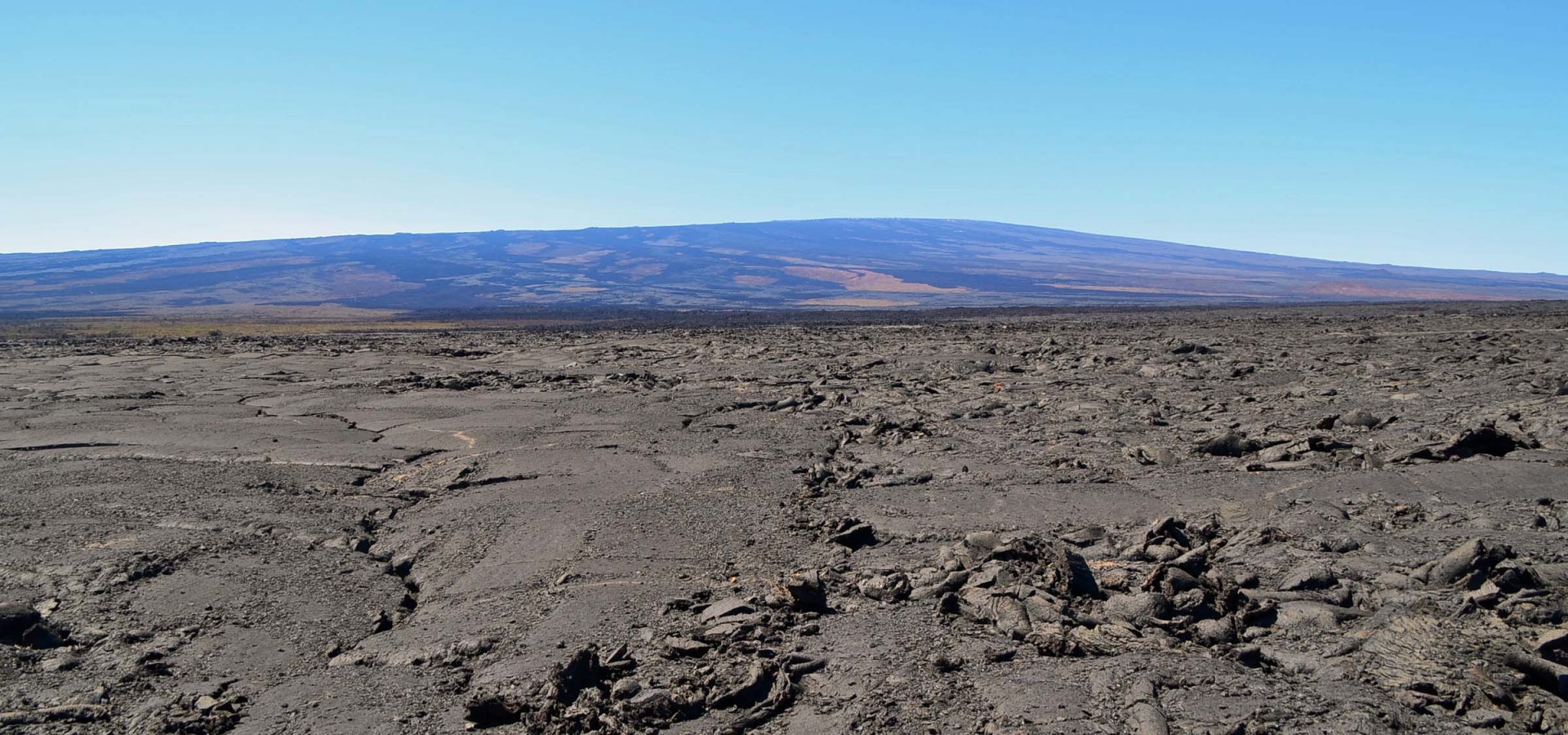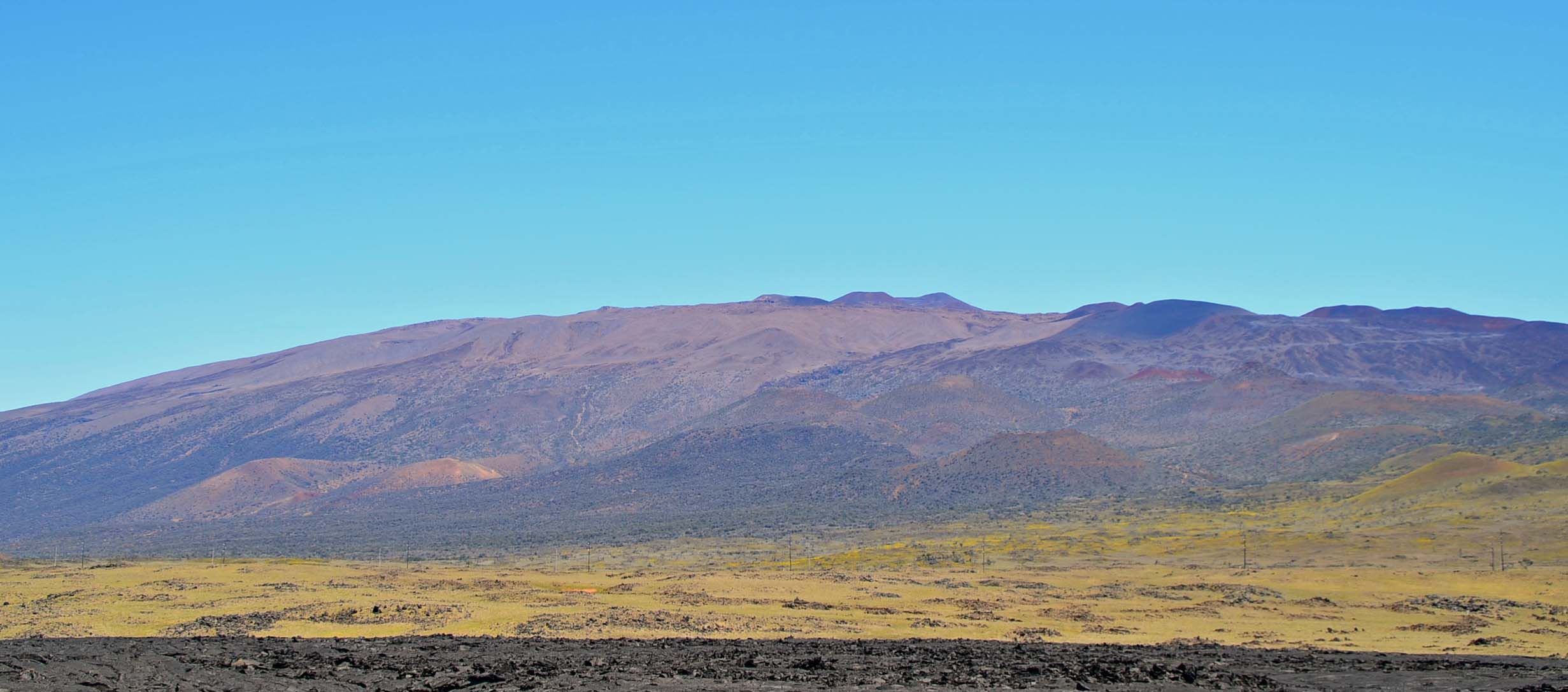Mauna Kea – Driving the Saddle Road to the World’s Largest Mountain
This is the final post from an almost five week tour that Alison and I took to the four main Hawaiian islands a few years ago. It has been updated for accuracy as of 2021. In the last post we found green turtles and green sand as we explored the area around the Fairmont Orchid. Even though we had had our last night on Hawaii, we had not had our last day. Our flights back to the mainland didn’t leave until around 10:00 PM so we had a final day to explore the Big Island before catching a 6:30 PM flight to Honolulu. My plan for today was to turn away from the sea and head for the two largest mountains in the world, Mauna Kea and Mauna Loa.
Most readers will probably think – “This guy calls himself an explorer and he doesn’t even know that Mount Everest is the largest mountain on earth? Some explorer!” Well my friends you would be wrong – while Everest is the tallest mountain on earth it is a pipsqueak in size compared to the total mass of these two Hawaiian volcanoes. Everest starts out at with its base in the Himalayan highlands while Mauna Kea starts out on the ocean floor some 20,000 feet below sea level, to rise to a true height of over 33,400 feet or 4000 more than Everest. Mauna Loa is right behind.
My intention was to drive as much of the Saddle Road, which runs directly between the two giant volcanoes, as possible. This involved retracing our route of a few days before almost as far as Waimea where Route 200, the Saddle Road ends at Route 190. From here it stretches just over fifty miles to Hilo. If we had been here before 2013, the trip would not be possible as the road was not in good shape and rental cars were forbidden to drive it. That changed only months before our visit when a new, all pavement version of the road opened making access available to all and creating a great shortcut between Hilo and Kailua-Kona. The only thing about the road that is the least bit dangerous now are the many narrow one lane bridges. So if you’ve read that the Saddle Road is kapu, that information is out of date – it is now one more great Hawaiian road to drive.
I was not sure what to expect of Saddle Road other than a good climb; it rises to over 6,600 feet at its apex, but you can go a lot higher if you take the road that goes up to the Mauna Kea observatories. With permission you can even get to the very summit. My goal was simply to drive as much of it as I could before having to turn back to Kona airport in time for our flight. The road started with a climb up through portions of Parker Ranch until it enters massive lava flows that characterize most of the parts we drove. Since the road is on the shoulder of Mauna Kea you don’t really get a great view of that volcano for the first part of the road, but you sure do of Mauna Loa. If you look closely at the photo at the top of the page you can see snowfields capping the mountain.

What makes this drive memorable is the sheer scale of the mountains, the unearthly quiet and like the Kohala Mountain drive, very little traffic. There are no towns or even ranches. The Mauna Kea State Park is a solitary place with picnic tables, but little shade and no recreational facilities that I could see. There is an army base, Pohakuloa Training Area that looked like it could double for the infamous Area 51 with its forlorn quonset huts, lack of visible activity and many signs warning ordinary citizens to stay the hell away. I could just imagine the reaction of some new recruit being told he was being sent to Hawaii only to find it was this God forsaken place.
We were making good time so I pushed on to the the side road that leads up to the summit of Mauna Kea, passing a large dead wild boar that was now roadkill. I wouldn’t want to see the car that hit it. The road to Mauna Kea is paved as far as the Visitor Station which is at 9,200 feet and although it is winding and steep it is in good shape. The weather was distinctly chilly as we made a short stop at the Visitor Center which has a bookstore and not much else. The road beyond this point was gated and this was as far as we could go.
From here things literally and figuratively went downhill. As we headed back down to Saddle Road I was suddenly seized with a great feeling of melancholy brought on by the knowledge that our time in Hawaii was ticking down to the final hours. Listening to IZ, which always made me happy now only made it worse. The strains of Hi’ilawe, his song yearning for the Hawaii that once existed, were a perfect accoutrement to my feeling of longing to stay here forever. The only other time I can remember a similar feeling of impending loss was when I read the final Calvin and Hobbes comic strip where Calvin says “It’s a magical world Hobbes ol’ buddy! Let’s go exploring” and I knew they would, but without me.
I snapped out it before becoming positively doleful when I saw the beauty of Mauna Kea to my right in a view I had not appreciated on the way up because I was looking straight at Mauna Loa. I stopped the car and we both got out and just stared. It might not have the triangular majesty of the Matterhorn, but Mauna Kea has a definite presence that is palpable. It is not surprising that this is where native Hawaiians believe the gods dwell.

T.S.Eliot wrote that the the world would end not with a bang, but a whimper and that is kind of the way I felt as we boarded the plane for home. Aloha Hawaii. I shall return.
Here is a link to the Big Island photo gallery with pics from every day we spent there. Enjoy.
Even though this is the last post from Hawaii, I have written one more. It’s about the twenty things I didn’t do on this trip and look forward to on a return visit.

